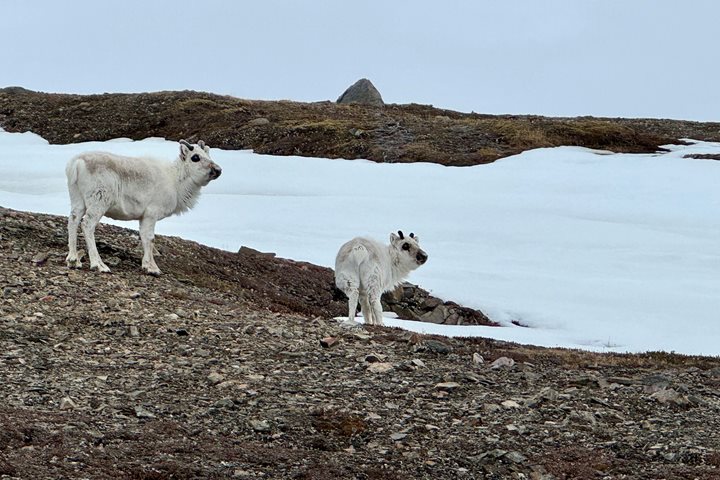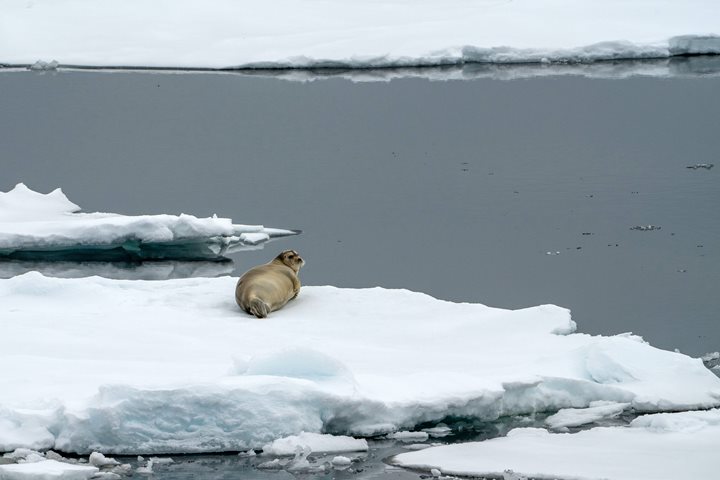After a night slowly cruising through the sea ice, we woke up to find ourselves still surrounded. As the hull gently bumped through the floes, we scanned the ice in search of wildlife. There is shallow water along this side of Spitsbergen and along the coasts of Barentsøya and Edgeøya, so we had to keep a safe distance from shore.
During breakfast we punched out from the ice edge and continued traveling south. Jennifer Kingsley gave a presentation on her journalism project “Meet the North: Life in the Arctic,“ which is about modern culture in the Arctic and has been supported by Lindblad Expeditions-National Geographic since 2015.
After lunch we found ourselves in the ice again as we made our way around the southern tip of Edgeøya. The mountains all along the coast were still streaked with snow, and, in places, the shoreline was a tangle of ice. After some time scanning and scouting, we made a landing at Andreetangen on the southwest coast of Edgeøya.
This place is well known for its trapping history. The Norwegian “Polar Bear King,” Henry Rudi, who killed hundreds of polar bears in his career, began coming here in the 1940s. His cabin still stands, surrounded by hundreds of polar bear, walrus, and reindeer bones.
The ground around us was smooth, firm, and covered in thousands of purple saxifrages. It was a welcome reminder that spring has come to Svalbard, despite the wind and overcast sky. We found polar bear and reindeer tracks, and a few of us saw a lone walrus swimming along the coastline. As we head further south, the ground becomes richer with plant life, and we look forward to more explorations tomorrow.







